
NPS / Robb Hannawacker Trail InformationThis trail begins in rocky terrain, crosses washes, ascends through boulder fields, and then winds through oak and pine woodland before concluding with washes and Joshua tree woodland. The trail is a two-mile (3.2-km) loop and total elevation gain is approximately 150 feet (46 m).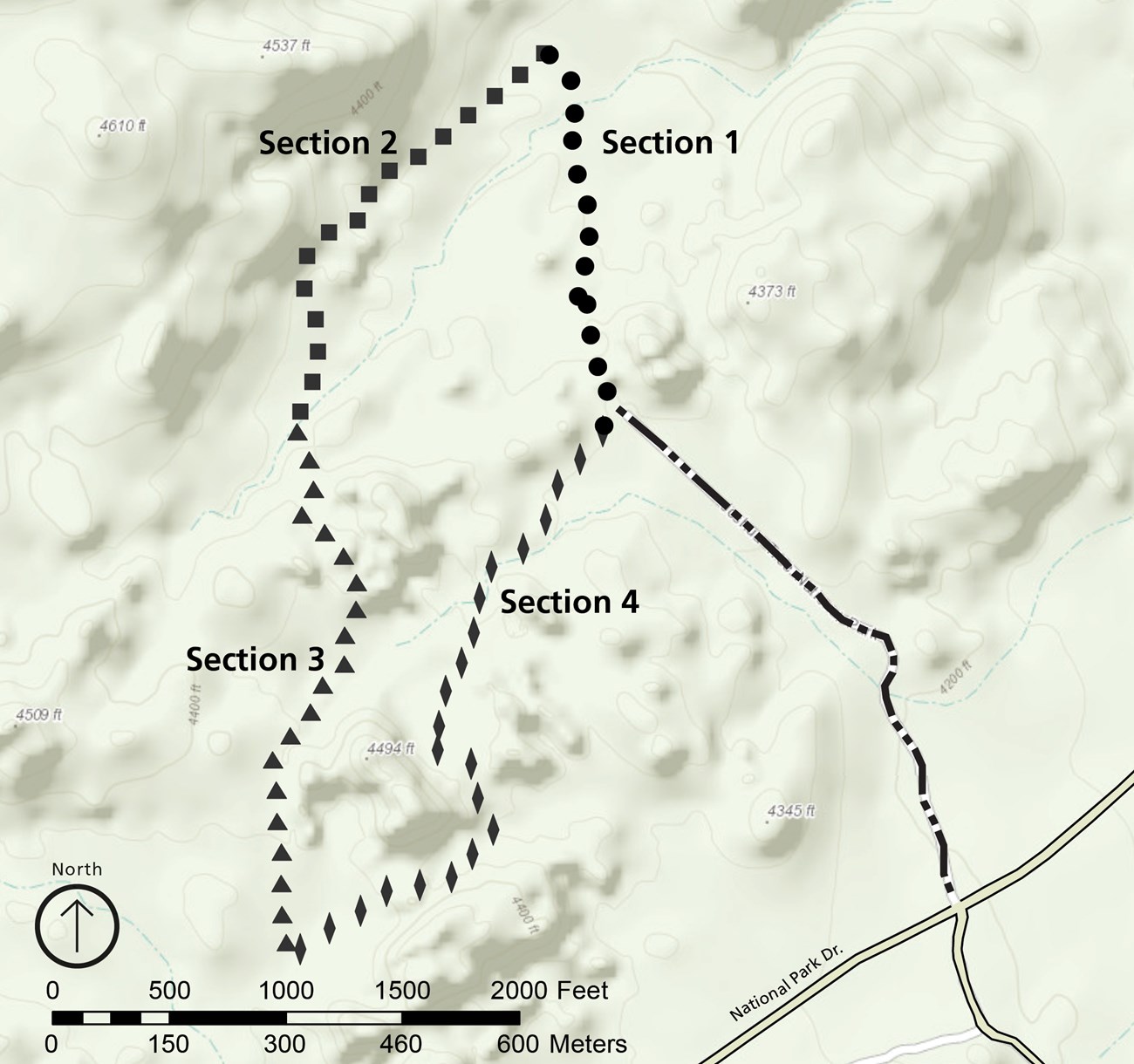
Trail Map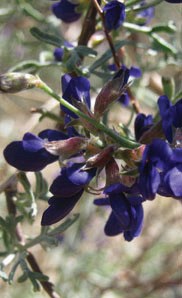
Section 1California Indigo BushPsorothamnus arborescens var. simplicifoliusApril–May This shrub puts on a lovely display of blossoms that can vary from cobalt to violet. If it isn’t in bloom, you can still look for the bean-like fruit that is characteristic of the Fabaceae family. The Cahuilla used indigo bush medicinally and as a light yellowish-brown dye for decorating their baskets. 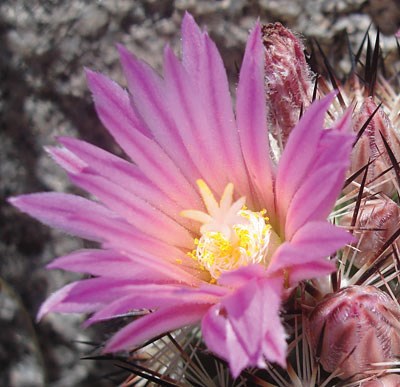
Cushion Foxtail CactusCoryphantha alversoniiApril–June Cushion foxtail cactus, a stem succulent, is known for its brilliant pink bloom and spines tipped with reddish black. Though you can find it throughout Joshua Tree National Park, it has a limited distribution elsewhere. It grows only in a small region in the transition zone between the Mojave and Sonoran Deserts in California, making it endemic to the state and of conservation concern. 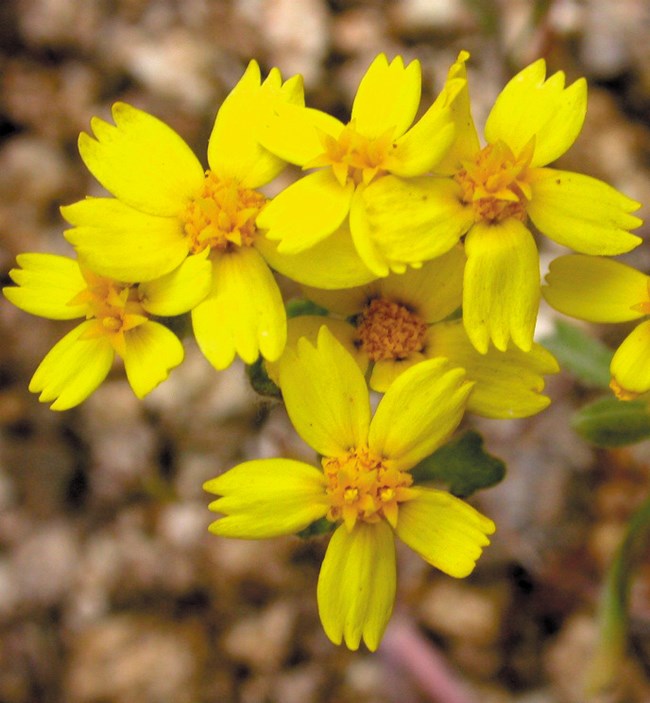
False Woolly DaisySyntrichopappus fremontiiMarch–June This diminutive plant has only five distinct ray flowers, each of which appears as one “petal.” It grows on sandy or gravelly soils above 2,000 feet (600 m) throughout the southwestern deserts, but is fairly uncommon in the park. It was named for John C. Frémont after he documented it in 1854 during one of his expeditions across North America. 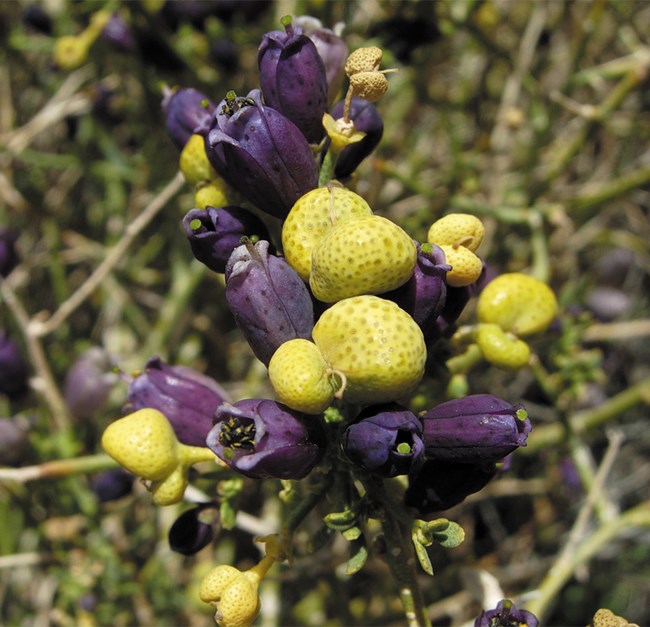
Darrell Shade Section 2Turpentine BroomThamnosma montanaFebruary–March Thamnosma means “odorous shrub” in Greek. Rub the stems or fruits of this gland-dotted shrub and you might recognize the spicy aroma: it is a close relative to the citrus fruits. The yellowish-green stems are leafless most of the year and bear a fruit that looks like a tiny two-lobed lemon. 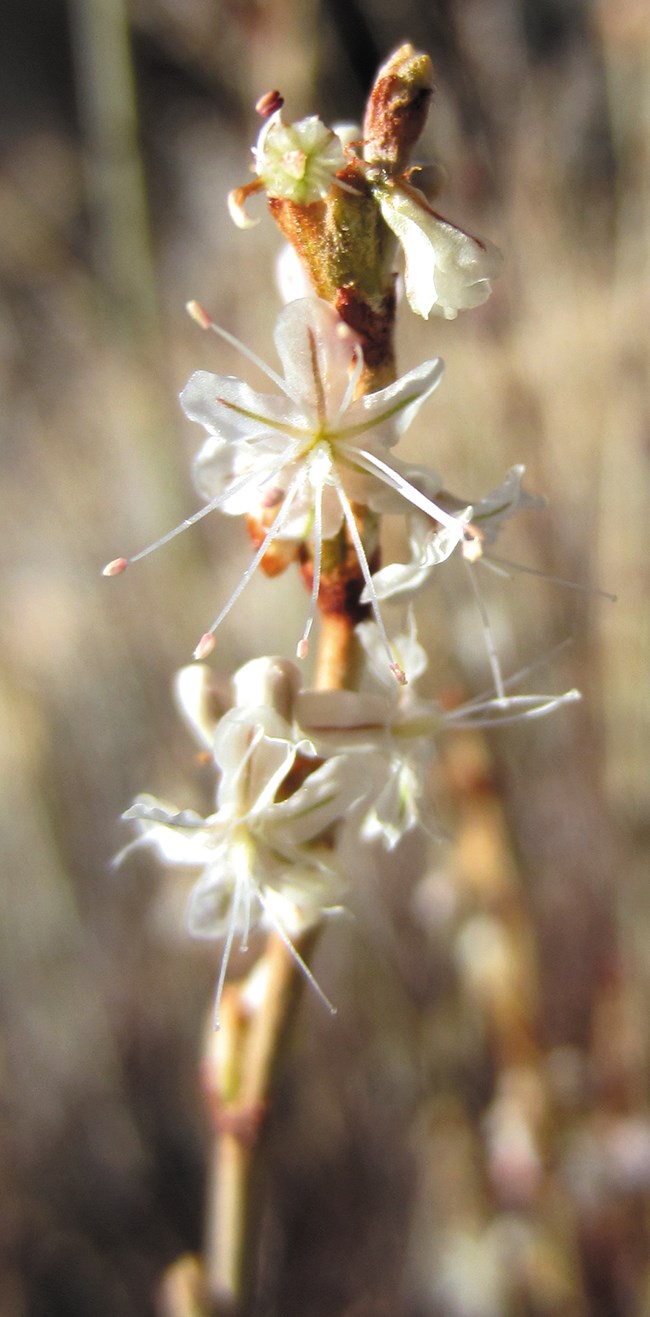
Wright's BuckwheatEriogonum wrightiiJune–August The sweet nectar of Wright’s buckwheat provides nourishment for a great diversity of native bee pollinators, as well as butterflies such as the beautiful Mormon metalmark. This common but unassuming shrub reminds us that by protecting our native vegetation we also protect a multitude of other species. 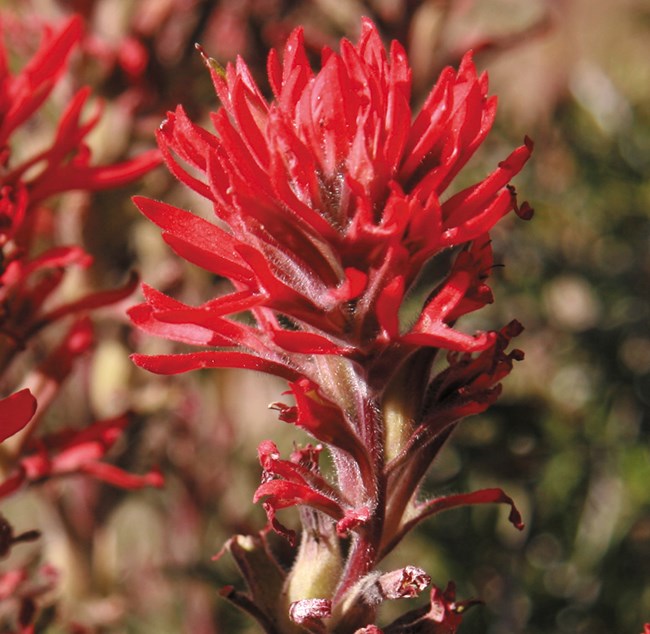
Desert PaintbrushCastilleja chromosaMay–September Desert paintbrush can be seen throughout the Mojave Desert. It is a root hemiparasite: although it can photosynthesize, it will insert haustoria (modified roots) into other plant roots to obtain nutrients. The bright red “floral” display is in fact not flowers, but red bracts surrounding the small, nectar-rich flower. These herbaceous perennial plants were a popular treat for Cahuilla children. 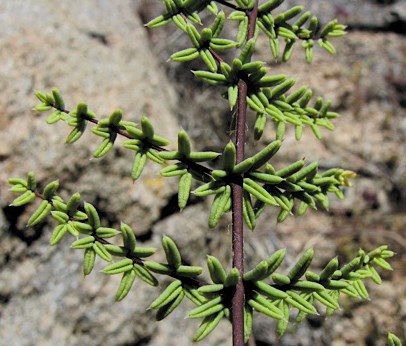
Section 3Birds-foot FernPellaea mucronata var. mucronataLike other ferns, birds-foot fern reproduces via spores rather than seeds; it does not have flowers. In order to reproduce, the spores must be transported in water, which is why most ferns are found in very moist habitats. Desert ferns are often found in rock crevices or at the bases of boulders (keep an eye out on the left side of the trail), where they remain dormant until water becomes available. 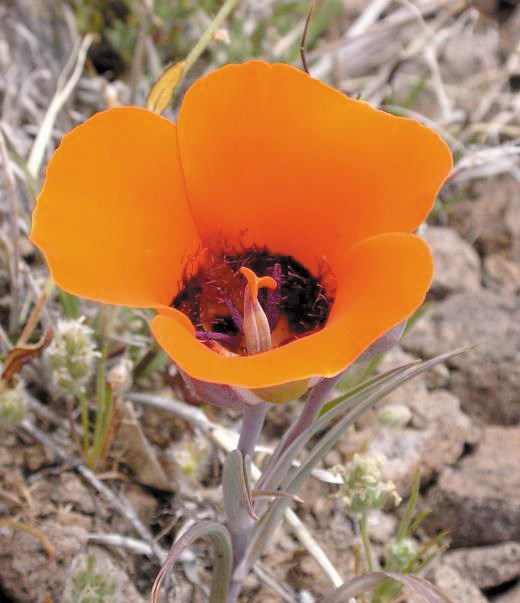
Desert Mariposa LilyCalochortus kennedyiApril–June In years when the rainfall is right, the desert mariposa lily displays brilliant orange flowers with rich, silky petals. In dry years, these geophytes (perennial plants with underground storage organs) wait underground as bulbs. For a nutritious treat, the Cahuilla people gathered these small bulbs from rocky soils and ate them raw, steamed, or roasted. 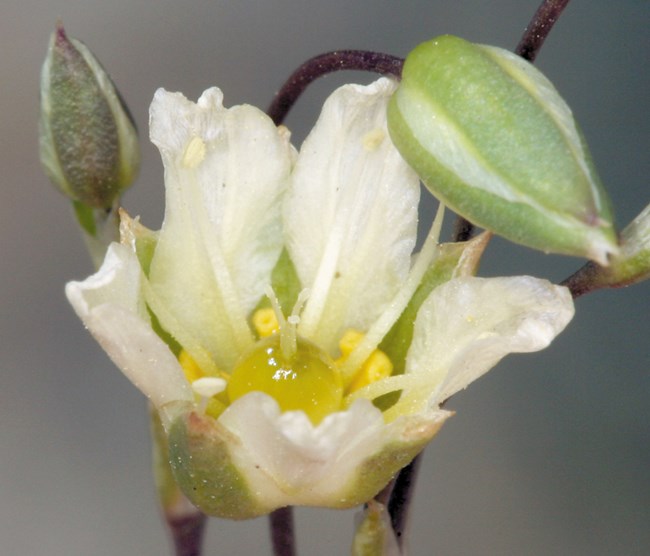
Mojave SandwortEremogone macradenia var. macradeniaApril–June Look for these tufted perennial plants with their erect stems, swollen stem nodes and needle-like leaves up on rocky slopes. Like many of the flowers in the pink, or carnation, family (Caryophyllaceae), the delicate petals of the Mojave sandwort look like they have been trimmed with pinking shears. 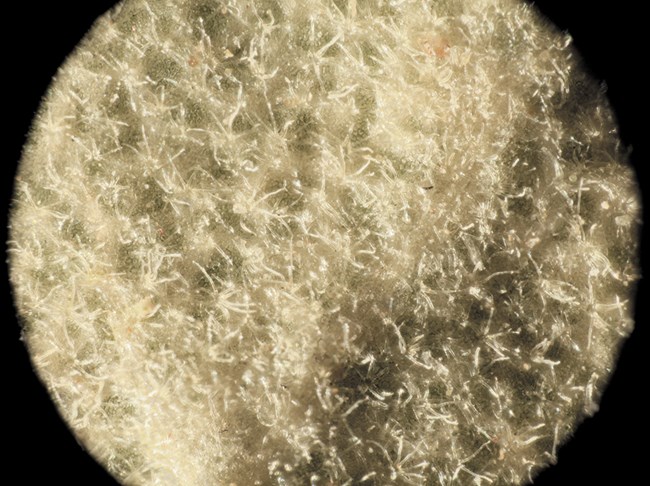
Muller OakQuercus cornelius-mulleriFebruary–April The Muller oak is named after botanist Dr. Cornelius Muller. Its acorns mature in one year, a characteristic that defines it as a white oak. The Muller oak’s leaves are strongly bicolored due to a dense mat of white, stellate (star-shaped) hairs on the underside of the leaf (top photo). This is the most common oak we have in the park. 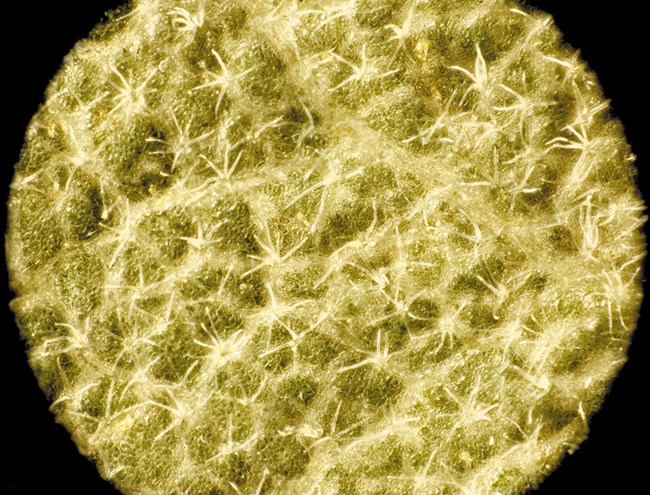
Tucker OakQuercus john-tuckeriFebruary–April The Tucker oak is also present along this trail. The leaves on the Tucker oak, named after oak expert Dr. John Tucker, do not appear bicolored because they lack the dense white hairs on the lower leaf surface. 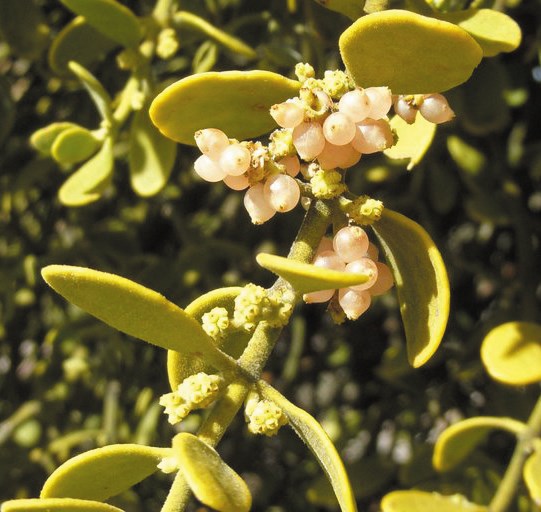
Oak MistletoePhoradendron leucarpum ssp. tomentosumDecember–March Mistletoes are hemiparasitic plants: although they draw nutrients from their host plant, they can also photosynthesize. The large, flat leaf blades distinguish oak mistletoe from desert mistletoe, which has scale-like leaves. Oak mistletoe taps into oak trees. In this case, you will find it on the Tucker oak (Quercus john-tuckeri). 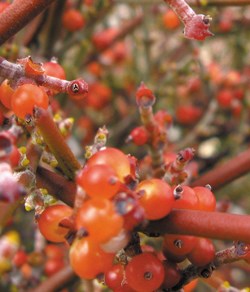
Desert MistletoePhoradendron californicumJanuary–March Mistletoes are hemiparasitic plants: although they draw nutrients from their host plant, they can also photosynthesize. The desert mistletoe utilizes arborescent shrubs and trees of the legume family (Fabaceae). The reddish stems of desert mistletoe (seen here growing on cat’s claw acacia) produce the main food source for the phainopepla, a large black or gray bird with a feathered crest. The desert mistletoe’s sticky berries can pass unharmed through the digestive tracts of the phainopepla. When the bird excretes the mistletoe’s indigestible seeds the small mound of sticky red pulp clings to the branches. If the seeds germinate on a suitable host plant, the mistletoe will attach itself with specialized “roots.” It’s a win-win: the mistletoe provides food for the phainopepla, and the bird helps disperse the plant’s seeds.
| |||||||||||||||||||||||||||||||||||||||||||||||||||||||||||||||||||||||||||||||||||||||||||||||||||||||||||||||||||||||||||||||||||||||||||||||||||||||||||||||||||||||||||||||||||||||||||||||||||||||||||||||||||||||||||||||||||||||||||||||||||||||||||||||||||||||||||||||||||||||||||
Last updated: July 18, 2017
